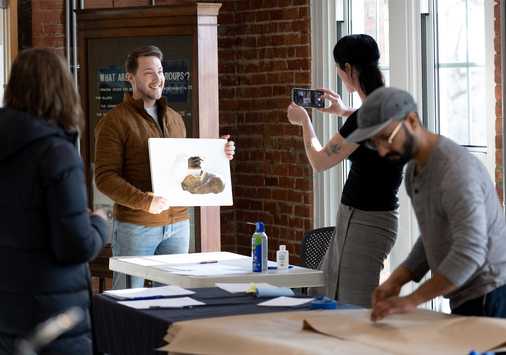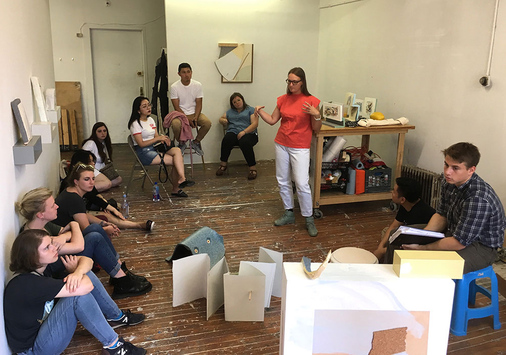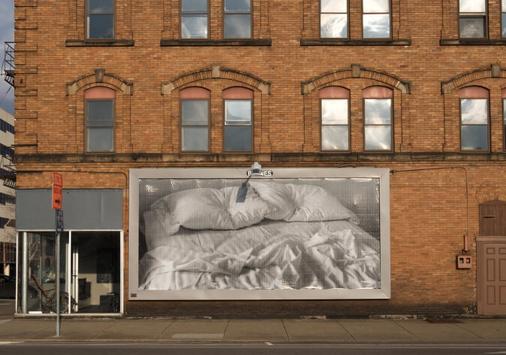Since graduating with a studio art BFA degree in 2019, Armando Román received his Master of Fine Arts from The Ohio State University and landed back home in Chicago.
Associate Professor Sheilah ReStack, chair of department says, “As Armando’s former BFA advisor, it has been such a pleasure to see him bloom and grow at OSU. I will not soon forget the installation he made for his MFA exhibition at OSU (in 2021), and now he continues to make and show work in Chicago. Our department faculty are proud of his accomplishments.”
Román’s exhibition, MADE IN HEAVEN, opens at The Martin Gallery on May 5. In his artist’s statement, Román says:
“I am an artist who makes work on paper. The paper varies from colored construction paper, rice paper, and canvas. My work combines digital brushstrokes with physical marks made often with crayons, colored pencils, and washable markers. There is no cultural specificity in my palette or the patterns I employ to remove white space from my compositions. The colors are ambiguously placed, referencing what could be a specific identity-based aesthetic. I think about my compositions in terms of border and center. The center, typically drawn digitally, often does not interact with the border. There is a clear distinction between the two. The surrounding borders are drawn by hand, using a similar palate to its digital counterpart in the center. The relationship between border and center, and its eventual collapse in the work, reflect the competing narrative that exists within my own relationship to Mexican culture.”
“Color, pattern, and abstraction; I consider these to be weapons with the aim to disrupt the systems of order I was raised to believe were right. Color is bodily. It is a profoundly sensorial tool that, while able to occupy the mind, is felt most deeply in the bones. Color is what allows me to create the work that I do - it dictates the work. Color is both rational and non-rational. While rationality, itself a subjective Western concept, the order is still necessary for understanding how colors relate to one another. Colors are sublime, and the act of coloring is a deeply devotional one. In my compositions, I consider white (space) to be an enemy. I fill my drawings with as much color and patterning as I can. The paper I use, however, works against me. The canvas I work with renders digital ink well, but because of its tooth, small crevices of uncolored white space remain. In a drawing full of color, a visible layer of untouchable white space remains.”














